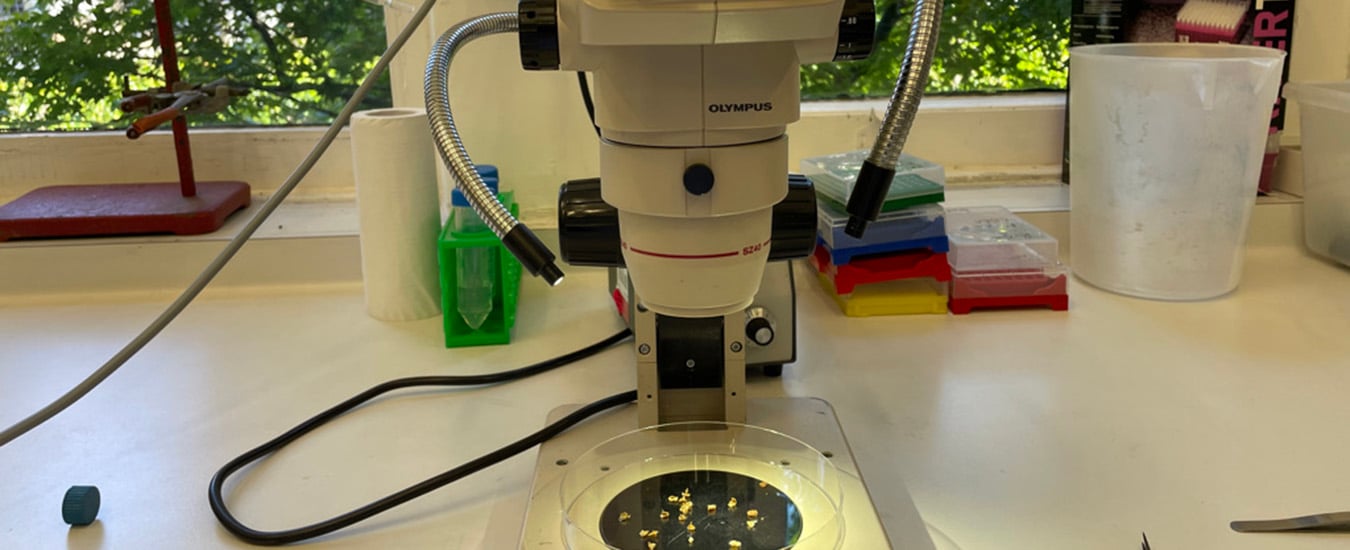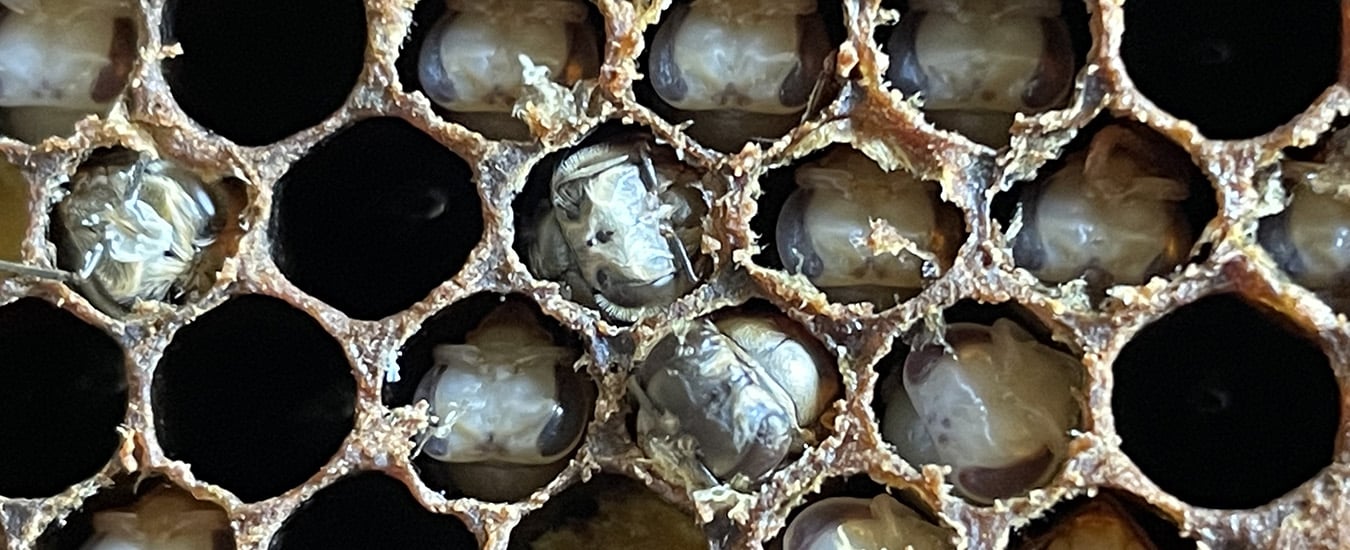Varroa is an external mite that feeds on both brood and adult bees. When it feeds, it spreads viruses. The combined effects of predation and the spread of viruses often results in colony death if nothing is done to prevent mite population growth.
Naturally, Varroa-resistant bee populations have arisen around the globe (and some stock was recently imported to Australia). Many of these populations display uncapping behaviour.
Uncapping occurs when bees partially remove the wax cap from a brood cell. Following this the brood may be removed from the colony, or the cell can be recapped. Opening the cell changes the humidity and temperature within the cell, and can result in the death of immature Varroa mites. This reduces mite population growth.

Uncapped: The dark area in the centre of the wax capping has been uncapped and recapped. Photo C Costa (in Büchler, Costa, Mondet, Kezic & Kavacic 2017).

Frame: Wax caps are removed from pink-eyed pupae or older, this is because there must be time for the workers to have detected a problem with the brood. Photo N Chapman
Bees also use uncapping to control brood diseases such as chalkbrood and European and American foulbrood. Uncapping is thought to be similar to bee’s natural hygienic behaviour and Varroa sensitive hygiene.
Uncapping occurs in populations that do not have Varroa, including in Australia. Only three colonies were tested from Australia by the researchers, and uncapping rates were low.

Uncapping microscope: A microscope is used to examine the wax caps for uncapping behaviour. Photo N Chapman
Selecting bees for their hygienic and/or uncapping behaviours before we get Varroa may assist our response if Varroa were to establish in Australia.
Plan Bee is currently investigating uncapping in the stock at NSW Department of Primary Industries. If any queen bee breeders would like to participate please contact Nadine Chapman ([email protected]; 02 93512267).
Acknowledgements:
- Büchler, Costa, Mondet, Kezic. & Kavacic (2017) Screening for low Varroa mite reproduction (SMR) and recapping in European honey bees. Research Network for Sustainable Bee Breeding Version 2017-09-01
- Martin, Hawkins, Brettell, Reece, Correia-Oliveira & Allsopp (2020) Varroa destructor reproduction and cell re-capping in mite-resistant Apis mellifera populations Apidologie 51: 369-381
- Plan Bee (National Honey Bee Genetic Improvement Program) is supported by funding from the Australian Government Department of Agriculture, Water and the Environment as part of its Rural Research and Development for Profit program. The project is further supported by AgriFutures Australia, the Department of Regional NSW, University of Sydney, University of New England Animal Genetics and Breeding Unit, Better Bees WA Inc, Wheen Bee Foundation, Costa Group, Olam, Beechworth Honey, Monson’s Honey and Pollination, South Pacific Seeds, Australian Queen Bee Breeders Association, Australian Honey Bee Industry Council, and commercial beekeepers.
- This article was peer-reviewed by Theotime Colin and Elizabeth Frost.


